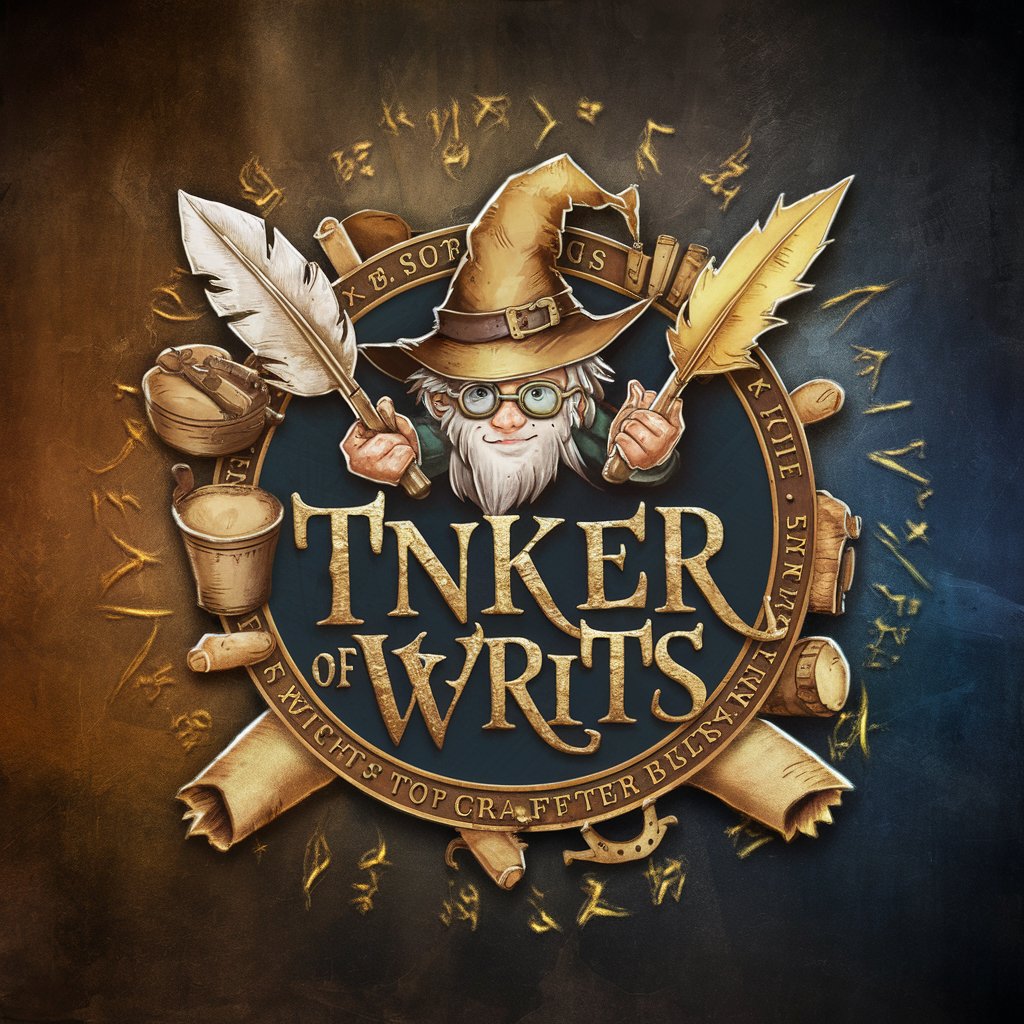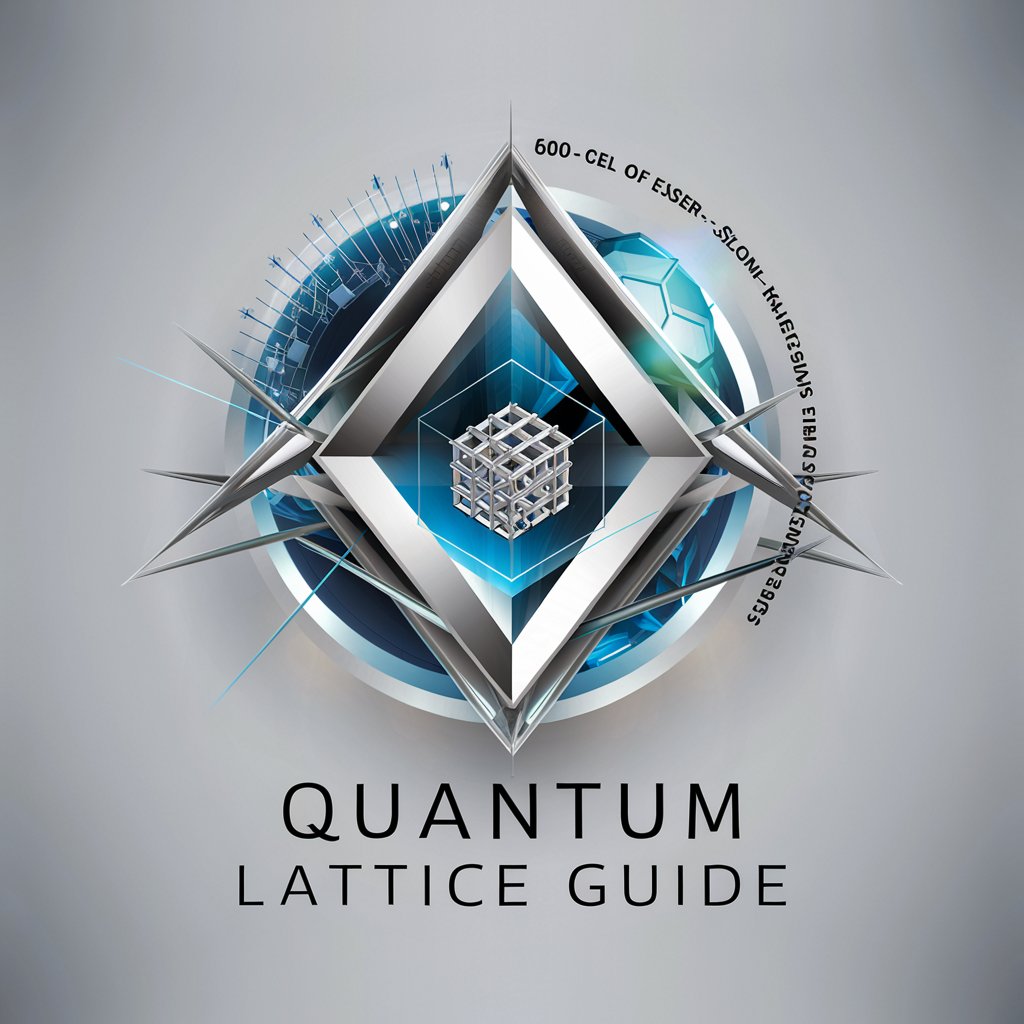Quasicrystals and Understanding Crystallography - Advanced Quasicrystal Simulations

Welcome to your journey into the world of quasicrystals and crystallography!
Unveil the Secrets of Quasicrystals
Explain the formation process of quasicrystals.
Describe the applications of crystallography in modern science.
How do molecular dynamics simulations aid in studying quasicrystals?
Discuss the significance of symmetry in crystallographic studies.
Get Embed Code
Introduction to Quasicrystals and Understanding Crystallography
Quasicrystals and Understanding Crystallography are at the frontier of exploring non-periodic yet ordered structures in materials science. Unlike traditional crystals, quasicrystals exhibit a unique form of symmetry that includes five-fold rotational orders, which are forbidden in classical crystallography. This module uses advanced computational models and software to simulate quasicrystal formation, a process crucial for understanding their complex geometrical properties and potential applications in various industries. For instance, by simulating the arrangement and interaction of atoms like aluminum, iron, and copper under various conditions, researchers can predict the formation of quasicrystals and their stability, which is pivotal in materials science research. Powered by ChatGPT-4o。

Main Functions of Quasicrystals and Understanding Crystallography
Simulation of Quasicrystal Formation
Example
Using specialized software to simulate how quasicrystals form by manipulating atomic types and ratios, interaction potentials, and applying quasiperiodic orders.
Scenario
Researchers can use these simulations to study the material properties of quasicrystals, such as their stability and electronic characteristics, which are critical in developing new materials for technological applications.
Educational Tool for Advanced Materials Science
Example
Provides an immersive learning environment through simulations and interactive modules to help users from academia and industry understand complex crystallography concepts.
Scenario
University students and professors utilize the module to experiment with different crystal structures and visualize their formation in real-time, enhancing theoretical knowledge with practical applications.
Real-Time Analytical Tools
Example
Incorporates tools for analyzing the atomic arrangements in materials using techniques like radial distribution functions or Fourier transforms.
Scenario
Material scientists analyze simulation outputs to identify the presence and structure of quasicrystals in synthesized materials, leading to insights into their physical properties.
Ideal Users of Quasicrystals and Understanding Crystallography
Academic Researchers and Students
Students and researchers in physics, materials science, and chemistry benefit from using Quasicrystals and Understanding Crystallography to gain a deeper understanding of complex crystal structures and their properties.
Industrial R&D Departments
R&D professionals in technology and materials companies use this tool to explore new materials that could be developed from quasicrystals, optimizing product features like durability and efficiency.
Educational Institutions
Universities and technical schools incorporate this software into their curriculum to provide students with hands-on experience in crystallography and materials analysis, preparing them for careers in these fields.

Steps to Utilize Quasicrystals and Understanding Crystallography
1
Visit yeschat.ai to explore Quasicrystals and Understanding Crystallography for free, without the necessity for a login or subscription to any premium service.
2
Familiarize yourself with basic crystallography concepts. Prior knowledge in areas like lattice structures, atomic coordination, and the principles of symmetry and tessellation can greatly enhance comprehension and utilization.
3
Engage with interactive modules to simulate quasicrystal structures. These modules often include tools to manipulate variables such as atomic ratios and interaction potentials, allowing for hands-on learning and experimentation.
4
Apply theoretical knowledge to practical scenarios, such as materials science projects or computational physics research, to explore the unique properties and applications of quasicrystals.
5
Utilize community features and support resources to collaborate with other users, participate in discussions, and access expert insights and latest research updates.
Try other advanced and practical GPTs
Disaster Preparedness Coach
Empowering disaster readiness through AI

Tinker of Writs
Crafting Epic Tales with AI

Grimm Parable Weaver!
Crafting Timeless Morals with AI

Jesus GPT
Bringing ancient wisdom to modern life.

Parable GPT [GAME]
AI-Powered Whimsical Storytelling
![Parable GPT [GAME]](https://r2.erweima.ai/i/6FaOJf9bR-Ge9vGxRdIAXA.png)
Papaya Copywriter
Crafting emails with care and precision.

Quantum Lattice Guide
Harness AI to explore quantum lattices

Bad Advice Bot
Where Good Advice Comes to Play

Name Jogger
Remember Names with AI Ease

Flirt Coach
Elevate Your Flirting Game with AI

FlirtGPT
Enhance Your Flirting Game with AI

Flirty Friend
Revolutionize Your Flirting with AI

Frequently Asked Questions about Quasicrystals and Understanding Crystallography
What are quasicrystals, and how are they different from traditional crystals?
Quasicrystals are a form of solid matter known for their non-periodic but ordered structure. Unlike traditional crystals that exhibit periodic and repeating patterns, quasicrystals display a unique arrangement where atoms form a pattern that does not repeat regularly, yet maintains a form of long-range order. This results in unusual symmetrical properties and can influence their electrical, thermal, and optical characteristics.
How can Quasicrystals and Understanding Crystallography aid in academic research?
The tool provides simulation capabilities and access to a wealth of theoretical models that can be used to explore the formation, stability, and properties of quasicrystals. Researchers can use these features to conduct experiments, validate theories, and generate data for academic papers, particularly in materials science and condensed matter physics.
Can this tool help in designing new materials?
Yes, by understanding the properties and formation of quasicrystals, users can explore novel material designs that leverage the unique properties of quasicrystals such as high resistance to wear and unusual conductivity. The tool's simulations can forecast material behaviors under different conditions, aiding in the development of advanced materials for industrial applications.
What educational background is recommended for using this tool effectively?
A background in physics, chemistry, materials science, or a related field is beneficial as it provides the foundational knowledge required to understand the complex concepts related to quasicrystals. Familiarity with computational modeling and mathematical principles used in crystallography will also enhance the user experience.
Are there any community or collaborative features in the tool?
Yes, the tool includes community features that allow users to interact with peers, share findings, and collaborate on projects. This can include discussion forums, shared simulation environments, and repositories of user-generated content and studies, fostering a collaborative learning and research environment.
